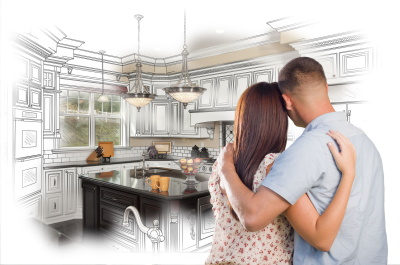Remodeling or updating your home is a great way to add value to your house now and in the future should you decide to sell. Whether it’s granite counter tops, wood floors or an addition to create more living space, remodeling is a true investment in your home.
As you’re browsing paint colors and floor samples, you may not be thinking about your homeowners insurance in Charleston, SC, and how it’s impacted by a remodel. Put homeowners insurance on the remodeling checklist because it plays an important role in the success of your home makeover.
Make insurance part of the design
If you’re planning for an addition or extra room, contact your insurance company before you start construction. You’ll need to add the new space into the home’s total square footage to ensure it’s covered. Should something happen to the addition before it’s added to your home insurance policy in Charleston, SC, you’ll likely be on the hook for the cost of repairs or even rebuilding the room you just added.
Be prepared for your rate to rise if you’re adding more square footage. If you’re concerned about the cost, contact your insurance company before you get started for an estimate of your new rate. Then you can factor that information into your remodeling budget.
While most additions or improvements are seen as favorable, adding a swimming pool is one change insurance companies don’t like. Pools dramatically increase the risk someone will get injured on your property. Make sure you’ve contacted your insurance company to find out about a rate increase and whether safety features such as a fence are required.
If your home improvement is more than cosmetic, there’s a chance you could quality for a discount. Using high-quality roofing materials or sustainable materials and fixtures could count in your favor. Be sure to inquire in advance.
Insuring a fixer-upper
It can be tempting to buy a house in pretty rough shape at a deeply discounted price and then turn it into your dream home. It happens on HGTV all the time, right? It is a good way to snag a real estate bargain but beware that it can be tough to get homeowners insurance for your fixer-upper.
Homes that have been foreclosed on or abandoned are a higher risk for insurance providers, according to U.S. News & World Report. The renovation process is more risky, plus there are potential problems that can arise when no one is living in the home.
It’s not impossible to secure coverage, but you’ll need to consult with your homeowners insurance company or shop around to find a company willing to provide conventional coverage or temporary special coverage for the renovation process. Once the renovation is complete, it should be much easier to secure traditional insurance coverage.
Covering the contractor
If you’re outsourcing the remodeling work to a general contractor, only hire one that is both licensed and bonded. Be sure to ask for proof, don’t simply trust the sticker on his construction truck. You’ll also want to ask for proof of insurance along with workers’ compensation and whether the general contractor’s policy covers any hired subcontractors.
At the end of the day, you’ll be happy you embarked on a remodel. Your living space is larger, modernized or improved. Plus, you’ve added to the home’s resale value. Just be sure you put “call insurance agent” on your remodel to-do list. It’s important to make sure you’ve adjusted your coverage if needed. With that detail out of the way, you can turn your attention to more important things like granite vs. marble and eggshell vs. ivory.
Learn more about Manning Insurance Services in Homeowner’s Insurance Polices.

